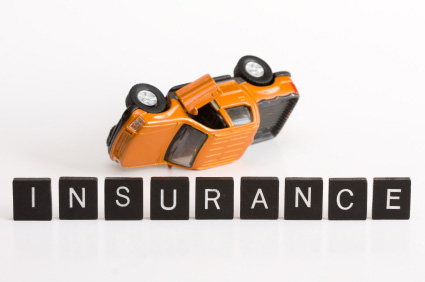What is auto liability?
Robert DiGiacomo
Car insurance coverage starts with liability protection.
Every state but New Hampshire requires vehicle owners to carry liability protection in the event that you cause injury to another person or damage someone else’s property while driving.
Florida has the lowest required amount of liability coverage in the U.S., mandating personal injury protection of at least$10,000 per person per incident and property damage liability protection of $10,000 per incident, according to the Insurance Information Institute.
 Maine has the highest minimum requirements, stipulating bodily injury coverage of $50,000 a person per incident and property damage protection of $25,000 per incident. Having a higher minimum level of liability could mean you’ll pay more for basic insurance in Maine than in states with lower minimums; however, rates vary greatly based on geographic location, driving history and other factors.
Maine has the highest minimum requirements, stipulating bodily injury coverage of $50,000 a person per incident and property damage protection of $25,000 per incident. Having a higher minimum level of liability could mean you’ll pay more for basic insurance in Maine than in states with lower minimums; however, rates vary greatly based on geographic location, driving history and other factors.
About 30 states, including New York, Virginia and Washington, require bodily injury liability coverage of at least $25,000 per person per incident, with varying minimums for property damage.
Deciding whether to go beyond the minimum –– and by how much –– depends on your assets and what you’re trying to protect from a lawsuit if you’ve caused an accident, according to Amy Bach, executive director of consumer group United Policyholders. For example, if you own a home and have significant savings or investments, you stand to have more to lose if you’re held liable.
“You want to give consideration to what would be exposed if you were to be sued, if someone were really injured and they came after you,” Bach says.
Minimums vary by state
Each state has its own requirements for liability coverage for bodily injury or property damage.
The only state not to set such a mandate –– New Hampshire –– still requires drivers to show they have “sufficient funds in the event of an at-fault accident,” according to the Insurance Information Institute.
Mississippi and Indiana are among the states to have recently increased their minimum liability requirements for the first time in several decades. The boost reflects higher costs for car repairs and medical treatment, according to Michael Barry, a spokesman for the Insurance Information Institute.
“The cost of everything had soared, yet minimum liability limits hadn’t been raised,” Barry says.
Mississippi and Indiana each require bodily injury liability minimums of $25,000 per person, with a maximum of $50,000 per incident, but have different property damage liability minimums: Mississippi’s is $25,000, while Indiana’s is $10,000.
Other forms of liability coverage
New York, Florida, Massachusetts and Oregon are among the “no fault” states to require personal injury protection (PIP) coverage, in addition to liability insurance, according to the Insurance Information Institute. In such states, policyholders can be reimbursed for a claim whether the accident was their fault or not, but may be limited in their ability to seek monetary damages in court.
PIP covers costs for medical and rehabilitation treatment, loss of earnings and funeral expenses for policyholders.
Don’t skimp on liability
In Bach’s view, it’s not worth it to save a few dollars and skimp on liability coverage, especially given the high cost of medical coverage for injuries suffered in a serious accident.
If you have to choose between more liability protection and raising your deductibles, it’s always better to go with the higher level of liability, according to Bach.
Another way to pay for a higher level of liability protection is to raise deductibles on other optional components of your policy, such as comprehensive, which covers non-collision damage (such as vandalism), or collision, which covers repairs to your vehicle. Or you could even choose to give up such optional coverage to ensure you have adequate liability protection.
“You want to be clear in your own mind what your needs are, and what … protections … are most important to you,” Bach says.
Open an umbrella
Yet another strategy to boost your liability protection is to take out an umbrella liability policy that provides an extra layer of coverage after your car or homeowner’s policies have been maxed out, Barry says.
Most companies require you to carry about $250,000 in liability coverage on your vehicle, before recommending you buy an umbrella policy, according to the Insurance Information Institute. The cost of a $1 million umbrella policy typically runs $150 to $300 a year.
California’s low-cost alternative
In California, where the minimum bodily injury liability coverage requirement is $15,000, the state has come up with a plan to help low-income drivers afford coverage, according to Robert Hunter, director of insurance for the Consumer Federation of America.
The Low Cost Automobile Program is aimed at those with average income under $10,000, but whose average car insurance premium is more than $1,000 a year, according to Hunter.
“Quite a few people don’t buy (liability coverage), even though that’s illegal,” Hunter says. “If it’s the difference between eating and having a piece of paper, (not having insurance) is what you do.”
Under the state plan, qualified low-income drivers who have good driving records pay less than $300 a year for coverage, according to Hunter.
